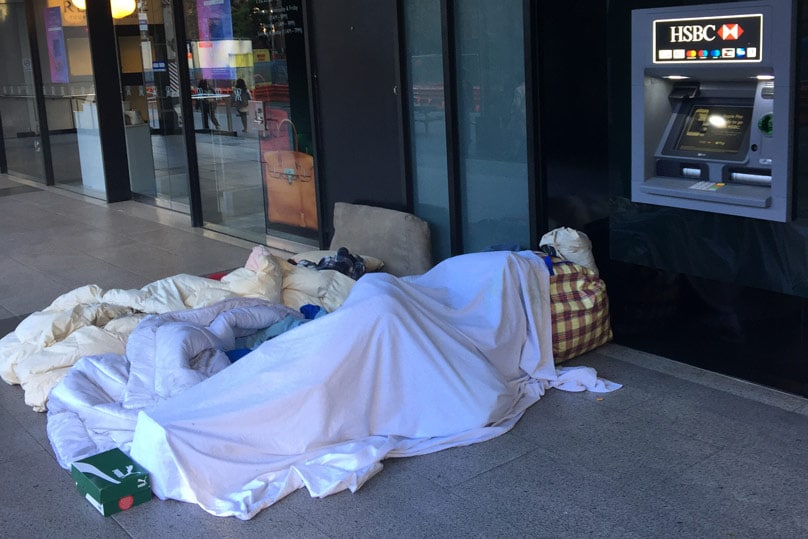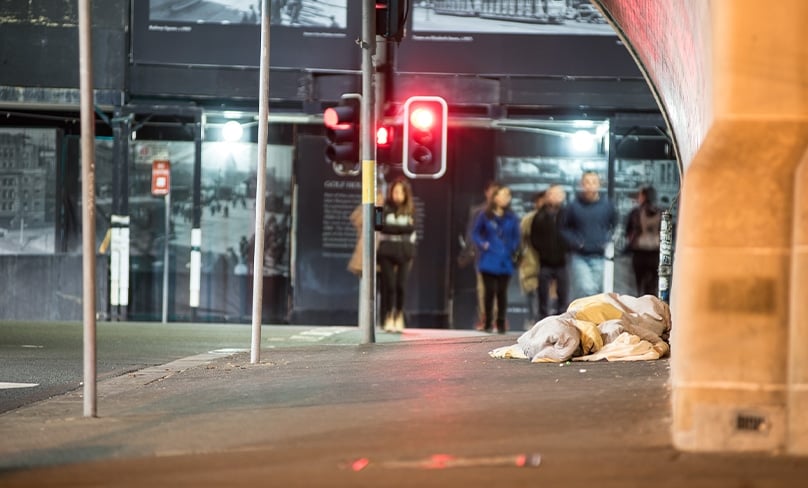
According to Graham West, CEO of the End Street Sleeping Collaboration, nobody needs to be sleeping rough in Sydney.
An increase in social housing, rapid interventions at the right time, and “wrap-around” services can keep people off the streets – or get them into housing quickly.
“I think with the right interventions, we have enough resources as a country to make sure nobody’s sleeping on the streets,” he told The Catholic Weekly to mark Homelessness Week.
The End Street Sleeping Collaboration brings together the NSW Government, City of Sydney and other major partners, including CatholicCare and the St Vincent de Paul Society, and is supported by the Catholic Archdiocese of Sydney.
“You’ve got to provide the wrap-around services that person needs … For some people that will be short interventions. For other people it will be lifelong support.”
It successfully hit the milestone of a 25 per cent reduction in street sleeping in Sydney by 2020, and is aiming for 50 per cent by 2025.
One important tool now used in Sydney is a “by name list”, where the individual histories of rough sleepers are recorded and tracked, helping services co-ordinate and making sure people don’t get forgotten.
“Being on the streets is quite damaging for anyone. It’s bad for your mental health, bad for your physical health, it’s very isolating,” Mr West said.

“For people who have been on the streets a long period of time, you can’t just provide a house and expect it to be fixed. You’ve got to provide the wrap-around services that person needs … For some people that will be short interventions. For other people it will be lifelong support of some kind.
“Unless we provide those support services and fund them properly at the same we provide housing, we run the risk of those people returning to homelessness.”
“Wrap-around” supports might include medical or mental health services, drug and alcohol rehabilitation, assistance with debts, employment assistance, and outreach from the local community.
Mr West said that the COVID-19 pandemic showed what was possible when the barriers for people to access accommodation were lowered.
“Suddenly people who had been excluded from accommodation because of rules or because of previous debts weren’t.”
Street sleepers were given emergency housing and, combined with an increase in welfare payments, saw many people’s situations improve.
“Suddenly people who had been excluded from accommodation because of rules or because of previous debts weren’t. That allowed them to stabilise in some cases, and to get off the streets,” he said.
Most important is an increase in the amount of social housing stock, because a “housing first” approach that intervenes rapidly when a person becomes homeless – within the first day or two – cannot work without available accommodation.

Recent research from the St Vincent de Paul Society NSW found that the NSW social housing list of over 51,000 applicants resulted in wait times of up to 10 years for social housing.
Priority needs – including for people experiencing homelessness – can result in waits of between 2-5 years.
But by building 5,000 social housing dwellings a year for 10 years, the wait list could be cut by three quarters, to fewer than 14,000 applicants.
Chris Hartley, research fellow at the University of New South Wales’ Centre for Social Impact (CSI) and one of the co-authors of the Vinnies research, said that without an increase in social housing, the most vulnerable people would continue to “cycle out of different stages of homelessness”.
“Homelessness becomes more and more entrenched because there’s not social housing to place people into.”
“Could be in boarding houses, might be in crisis accommodation, or rough sleeping. In NSW 50 per cent of people who went to a homeless service looking for accommodation assistance were turned away,” he said.
“Homelessness becomes more and more entrenched because there’s not social housing to place people into.”
CSI’s research identifies five key actions to end homelessness: a national homelessness strategy; an increase in social and affordable housing; “housing first” policies linked to support for long-term homeless; targeted interventions to “turn off the tap of entry”; and supportive systems and programs.
